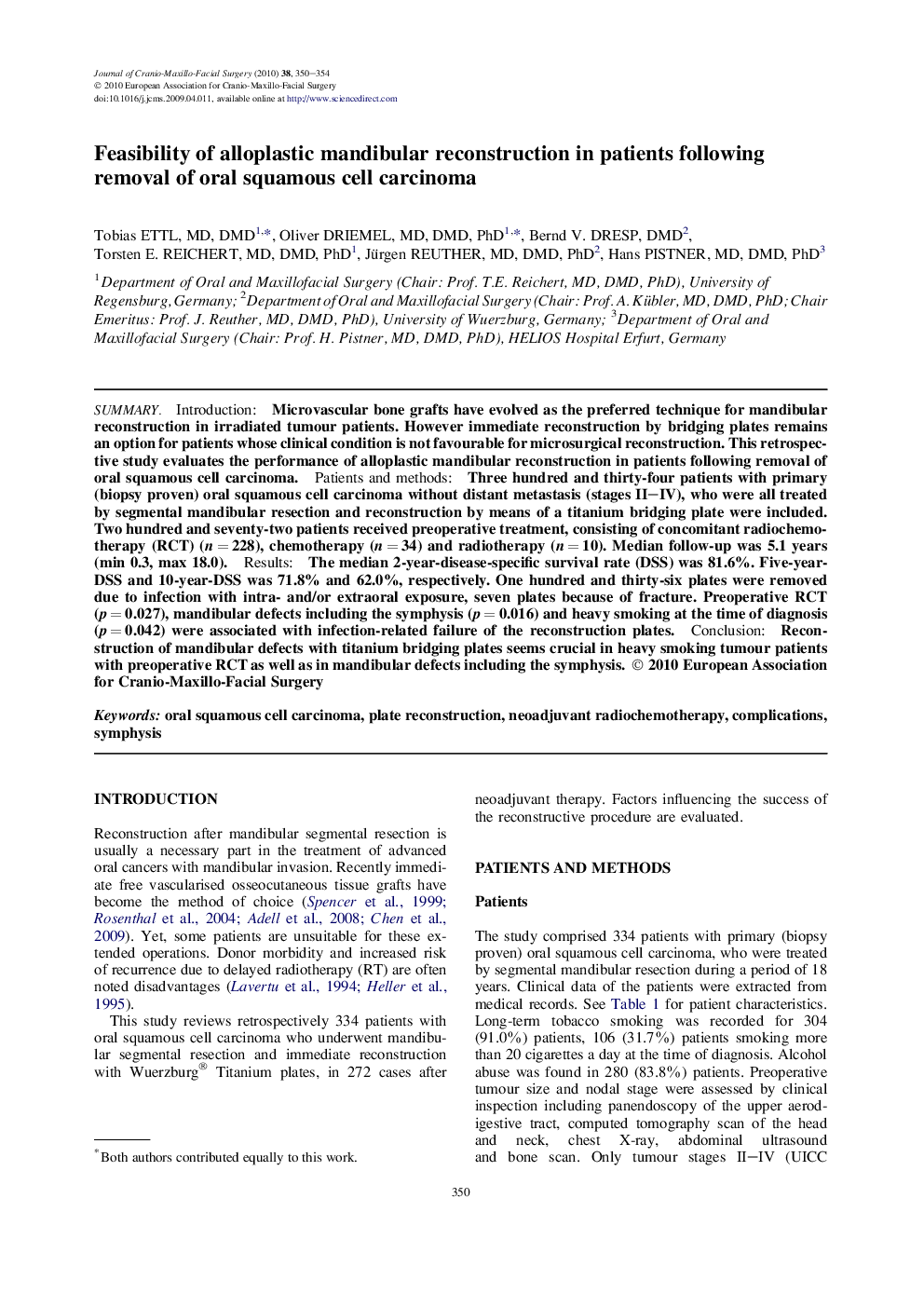| Article ID | Journal | Published Year | Pages | File Type |
|---|---|---|---|---|
| 3143344 | Journal of Cranio-Maxillofacial Surgery | 2010 | 5 Pages |
SummaryIntroductionMicrovascular bone grafts have evolved as the preferred technique for mandibular reconstruction in irradiated tumour patients. However immediate reconstruction by bridging plates remains an option for patients whose clinical condition is not favourable for microsurgical reconstruction. This retrospective study evaluates the performance of alloplastic mandibular reconstruction in patients following removal of oral squamous cell carcinoma.Patients and methodsThree hundred and thirty-four patients with primary (biopsy proven) oral squamous cell carcinoma without distant metastasis (stages II–IV), who were all treated by segmental mandibular resection and reconstruction by means of a titanium bridging plate were included. Two hundred and seventy-two patients received preoperative treatment, consisting of concomitant radiochemotherapy (RCT) (n = 228), chemotherapy (n = 34) and radiotherapy (n = 10). Median follow-up was 5.1 years (min 0.3, max 18.0).ResultsThe median 2-year-disease-specific survival rate (DSS) was 81.6%. Five-year-DSS and 10-year-DSS was 71.8% and 62.0%, respectively. One hundred and thirty-six plates were removed due to infection with intra- and/or extraoral exposure, seven plates because of fracture. Preoperative RCT (p = 0.027), mandibular defects including the symphysis (p = 0.016) and heavy smoking at the time of diagnosis (p = 0.042) were associated with infection-related failure of the reconstruction plates.ConclusionReconstruction of mandibular defects with titanium bridging plates seems crucial in heavy smoking tumour patients with preoperative RCT as well as in mandibular defects including the symphysis.
